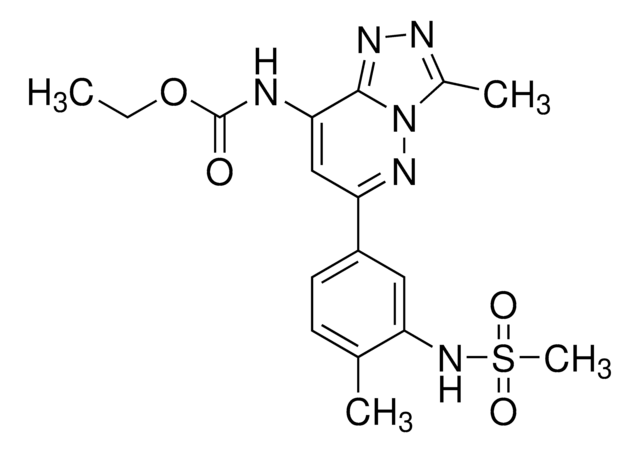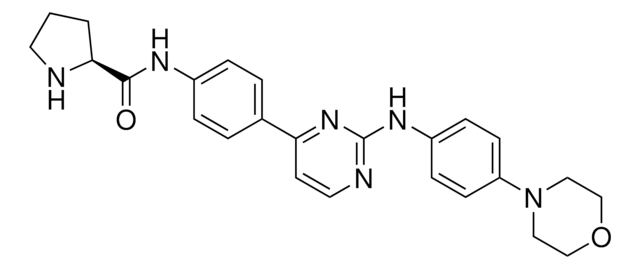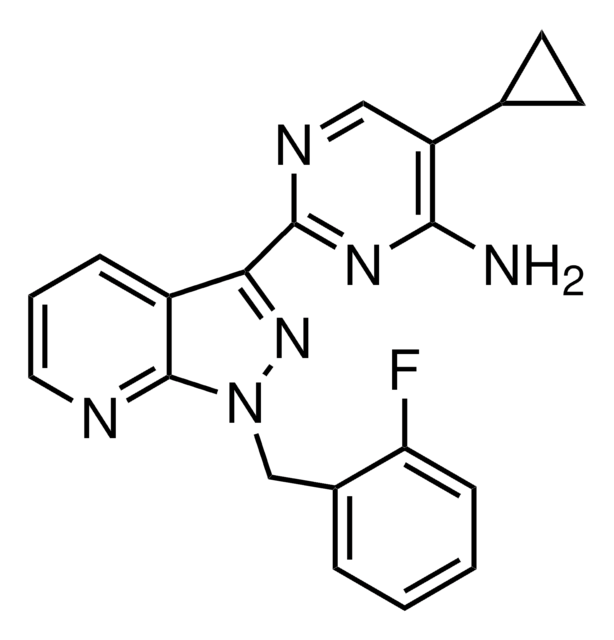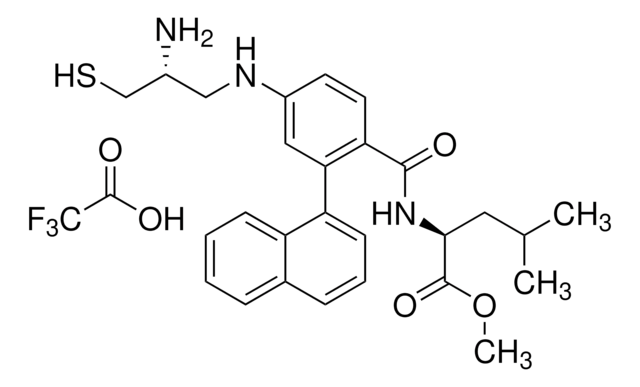SML2444
BAY 41-4109
≥98% (HPLC)
别名:
(-)-Methyl (4R)-4-(2-chloro-4-fluorophenyl)-2-(3,5-difluoro-2-pyridinyl)-6-methyl-1,4-dihydro-5-pyrimidinecarboxylate, (-)-Methyl 4-(2-Chloro-4-fluorophenyl)-2-(3,5-difluoro-2-pyridinyl)-6-methyl-1,4-dihydropyrimidine-5-carboxylate, BAY41-4109, Bayer 41-4109, Methyl (4R)-4-(2-chloro-4-fluorophenyl)-2-(3,5-difluoro-2-pyridinyl)-1,4-dihydro-6-methyl-5-pyrimidinecarboxylate
About This Item
推荐产品
化驗
≥98% (HPLC)
形狀
powder
顏色
white to beige
溶解度
DMSO: 2 mg/mL, clear
儲存溫度
−20°C
SMILES 字串
CC1=C(C(OC)=O)[C@H](C2=C(Cl)C=C(F)C=C2)N=C(C3=NC=C(F)C=C3F)N1
InChI
1S/C18H13ClF3N3O2/c1-8-14(18(26)27-2)15(11-4-3-9(20)5-12(11)19)25-17(24-8)16-13(22)6-10(21)7-23-16/h3-7,15H,1-2H3,(H,24,25)/t15-/m0/s1
InChI 密鑰
FVNJBPMQWSIGJK-HNNXBMFYSA-N
生化/生理作用
儲存類別代碼
11 - Combustible Solids
水污染物質分類(WGK)
WGK 3
閃點(°F)
Not applicable
閃點(°C)
Not applicable
我们的科学家团队拥有各种研究领域经验,包括生命科学、材料科学、化学合成、色谱、分析及许多其他领域.
联系技术服务部门






